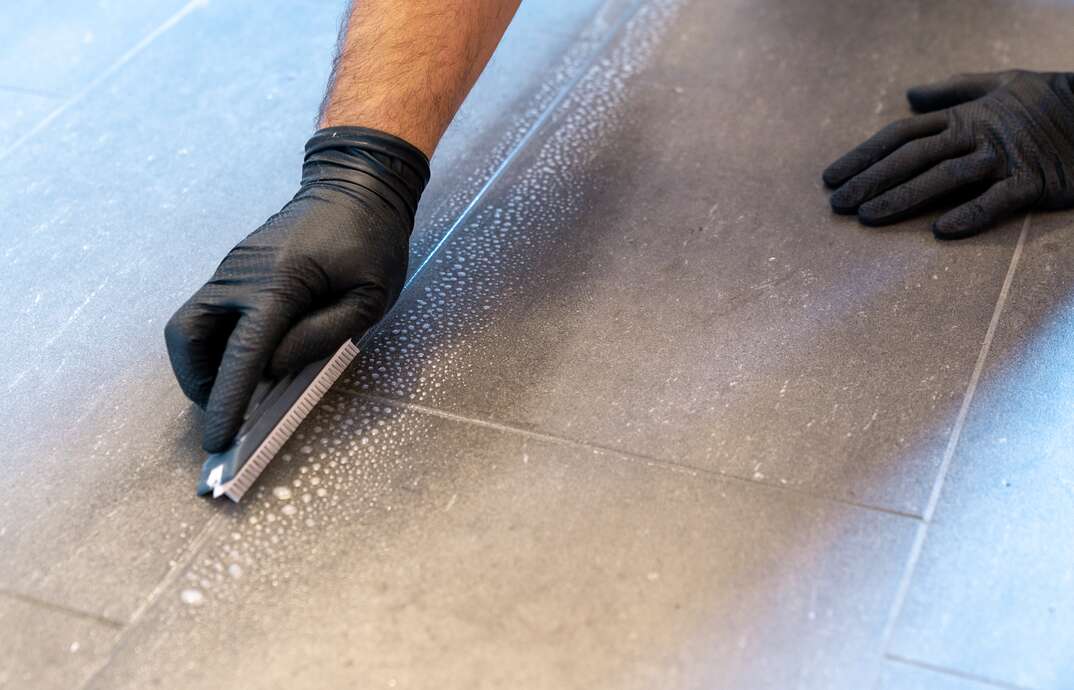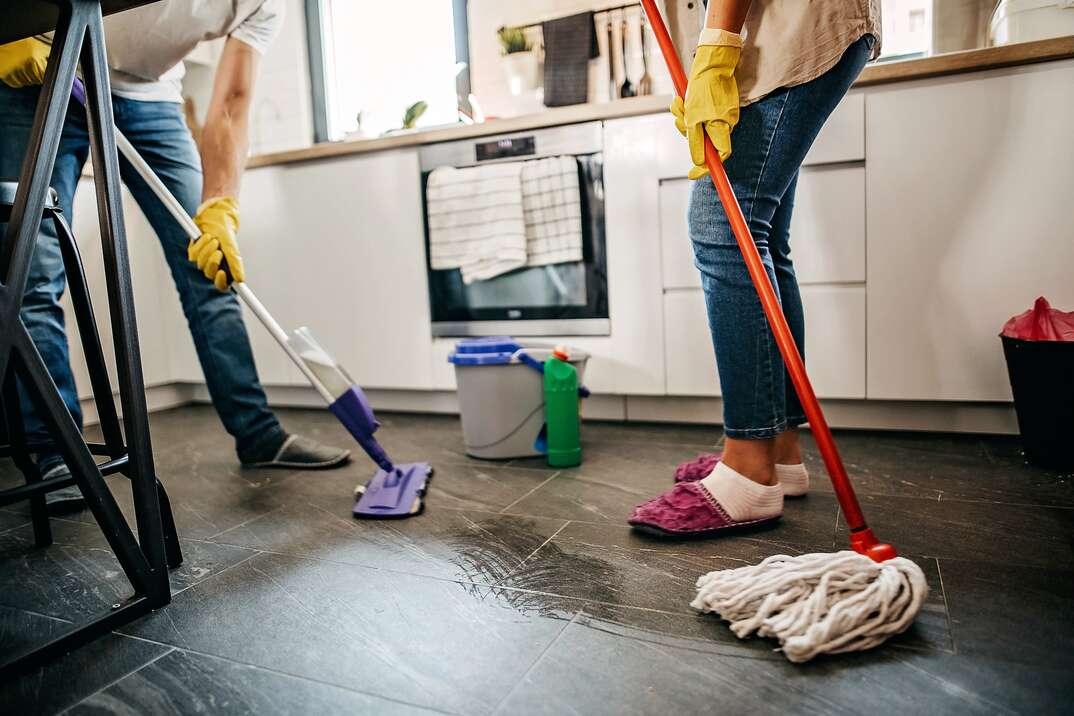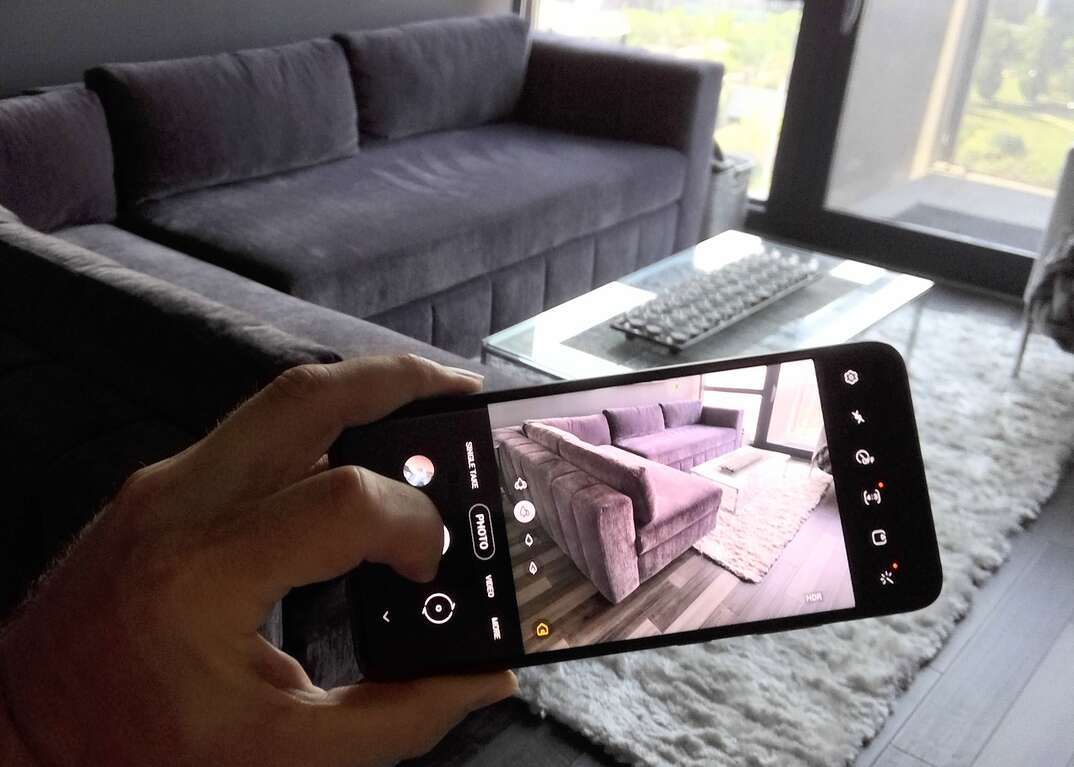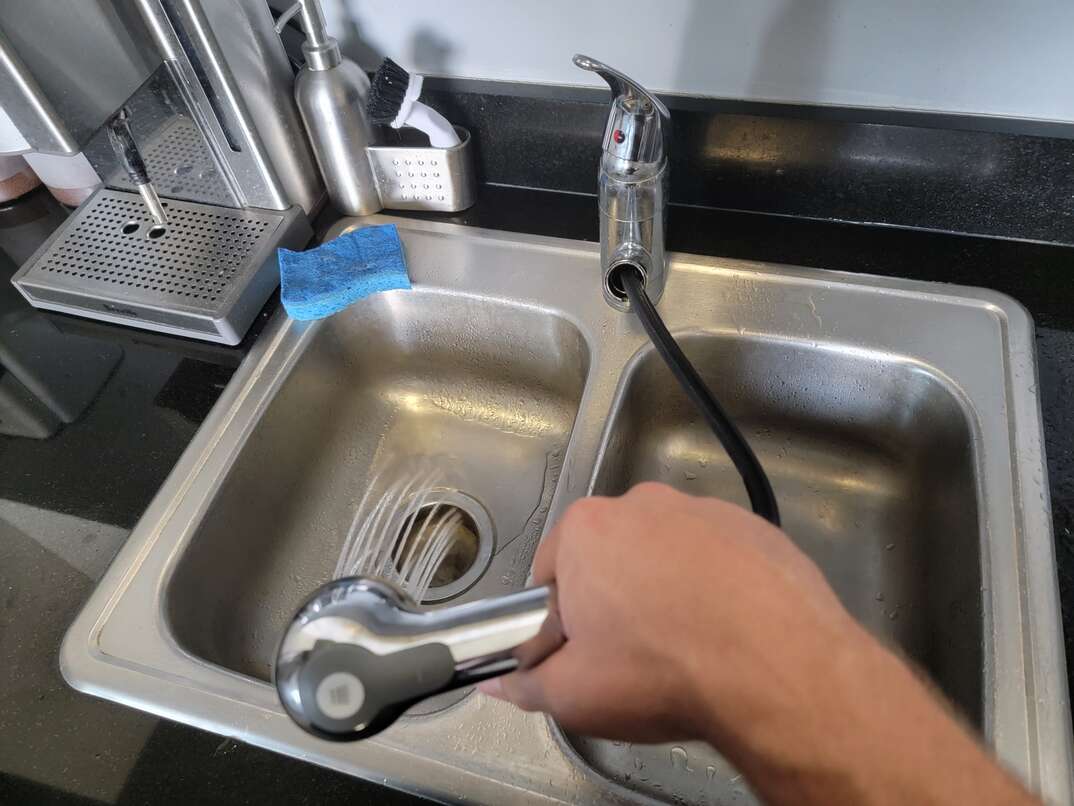How to Clean Tile Floors and Grout

Cleaning Tile Floors at a Glance
- Step 1: Vacuum loose dirt
- Step 2: Mix cleaning solution
- Step 3: Mop
- Step 4: Scrub grout
Let’s face it: Your tile floors have seen better days. In the kitchen, the tiles are susceptible to all manner of food residue. The bathroom tiles are covered in soap scum and water spots. And that’s not to mention the grout, which definitely used to be white.
This May Also Interest You: How Much Does It Cost to Remove a Tile Floor
Luckily, it’s not so hard to get your tile clean. Follow the tips below to get started.
What Can You Use to Clean Tile Floors?
There are a few tried-and-true methods to clean and disinfect tile floors. You can make a simple but effective cleaning solution from a mixture of items found in your pantry or under your kitchen sink. White vinegar, dish soap, hot water and baking soda are great ingredients for a tile cleaning solution. Alternatively, you could buy a cleaning product formulated for tiles.
If you don't have the time to mop, you can also use a steam cleaner or steam mop for tiles. Steam-powered cleaning tools use water as opposed to chemicals, which may be preferable for families with small children or pets.
How Do You Clean Tile Floors?
Follow these steps to get your tile floors sparkling again:
1. Remove Loose Debris
Sweep or vacuum to remove loose debris and surface-level dirt. Prep work is important before getting stuck into any deep cleaning. Any sticky residue should be removed with a paint scraper. Caked-on spots can be scrubbed off with a rag soaked in acetone, though you won’t want to use this method if you have natural stone tiles or tiles that are not sealed.
2. Mix the Tile Cleaner
Now it's time to mix a cocktail of cleanliness. Grab a large bucket and fill it with 2 gallons of hot water. Add in a half cup of white vinegar, a tablespoon of dish soap and a quarter cup of baking soda. For natural stone tiles and linoleum, leave the vinegar out of the solution as the acid can damage the surface.
3. Mop
Grab a sponge mop or chamois-type mop. If you don't want to use a bucket for your tile cleaning solution, decant it into a spray bottle and spritz the tiles liberally. Mop in small sections, starting in the farthest corner from the door and working back toward it.
4. Get at the Grout
Now that your tiles have that mirror-like sheen, it's time to focus on the nitty-gritty — or nitty-grouty, we should say. For clean grout lines, you'll need a specialized grout cleaner. You can either purchase a ready-made grout cleaner or make your own.
To make your own cleaning solution, mix warm water with equal parts baking soda and vinegar. Lather the solution onto the grout and scrub it off with a soft-bristled brush or unused toothbrush. Grout is porous and quite delicate, so stay away from harsh chemicals and steel brushes. You can leave the solution on the grout for a few hours to let it penetrate before scrubbing it away.
More Related Articles:
- How to Remove a Tile Floor
- Get the Grout Out: How to Remove Grout From Tile
- Tale of the Tile: An Overview of Bathroom Tile Flooring
- How Much Does It Cost to Install or Replace Tile?
- Want ‘Em to Marvel at Your Marble? Learn How to Clean and Maintain Marble Floors
How Do You Clean Tile Floors Yourself?
Invest in a good quality mop for surface-level cleaning and polishing scrubber for a deep clean. Sweep off all the dry dirt and dust first, then make your cleaning solution. Add peppermint or lavender oil to your concoction to give your home a fresh scent.
What’s the Fastest Way to Clean Tile Floors?
Use a steam cleaner for tile floors if you'd like to get the job done quickly. You can also use a large mop and break the tiled area into smaller sections, which tends to make the cleaning process go quickly. Regularly vacuuming and gently mopping floors can prevent a build-up of dirt to begin with, which will reduce the time it takes to deep clean your tile.
Since we’re all home now more than ever, being prepared for unexpected home repairs with a plan from HomeServe is important. Having a plan in place gives you peace of mind knowing that you can simply call our 24/7 repair hotline for covered breakdowns. See what plans are available in your neighborhood.



